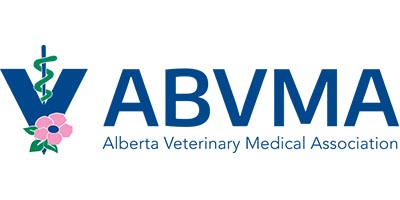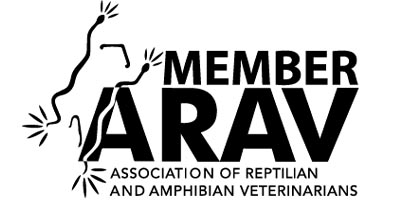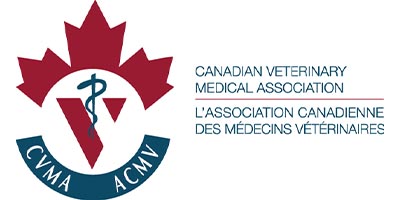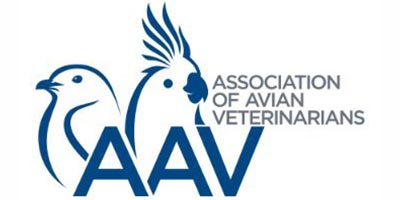 What is Rabbit Hemorrhagic Disease?
What is Rabbit Hemorrhagic Disease?
Rabbit hemorrhagic disease (RHD) is a highly contagious and highly lethal viral disease of rabbits. The first reported outbreak of this disease was in China in 1984 within a group of commercially-bred Angora rabbits imported from Germany. In less than a year, RHD killed millions of domestic rabbits in China and spread over an area of 50 000 square kilometers. From China, it spread around the world via infected rabbits or rabbit products. By the late 1990s, the virus had spread to 40 different countries and had become endemic in many areas. Only periodic outbreaks have been reported in North America. In Canada, the first report of RHD occurred in 2011 as an isolated case of sudden death in an indoor lop rabbit in Manitoba. The disease reappeared in eastern Quebec in 2016 in small hobby farms but was quickly contained and eliminated. In 2018. a new outbreak of RHD in feral domesticated rabbits was reported on Vancouver Island in the Nanaimo area which quickly spread along the eastern island coast and onto the lower mainland of B.C. This disease eventually made its way to Calgary causing a mass die-off of feral rabbits in September of 2022.
What kind of virus causes RHD?
RHD is caused by rabbit hemorrhagic disease virus (RHDV), a member of the genus Lagovirus and family Caliciviridae. There are three major viral subtypes: RHDV1, RHDVa, and RHDV2. RHDV1 and RHDVa are very closely related while RHDV2 is considered a separate serotype. RHDV2 was first identified in France in 2010 affecting wild and farmed vaccinated rabbits. RHDV2 rapidly spread across Europe and the Mediterranean basin. The virus identified in the B.C. outbreak is RHDV2.
Why are we worried now?
The British Columbia outbreak appears to be wider spread than the previous outbreaks have been. In late February 2018, a large group of feral domesticated rabbits was found dead on Vancouver Island University Campus. Three carcasses were sent to the Animal Health Centre in Abbotsford that confirmed the rabbits had died of rabbit hemorrhagic disease. Further testing determined the virus responsible was RHDV2. A major feral rabbit colony die off was then reported on Annacis Island, also confirmed to be RHDV2. Cases have since been confirmed in Nanaimo, Comox, Courtenay and Parksville on Annacis Island and in Delta and Richmond on the mainland. Sadly, this virus spread across the continental USA and eventually arrived in Calgary in the fall of 2022 causing a mass die-off of stray rabbits in various areas around the city. In early 2023, the feral rabbit population in Canmore, AB was decimated by this terrible virus.
What animals are susceptible to RHDV?
RHDV primarily affects wild and domesticated European rabbits (Oryctolagus cuniculus). Until recently, other lagomorphs, including European brown hares (Lepus europaeus), varying (snowshoe) hares (Lepus americanus), cottontails (Sylvilagus floridanus), black-tailed jackrabbits (Lepus californicus), white-tailed jackrabbit (Lepus townsendii), and volcano rabbits (Romerolagus diazzi), were considered resistant to RHDV. However, in 2021 a new strain of RHDV emerged and it seems to affect all lagomorphs.
This virus does not infect humans or other mammals, but both can act as vectors and spread the virus.
What are the symptoms of RHD?
The incubation period of the disease is short. A rabbit can start show signs of illness within 1 to 4 days of exposure to the virus.
The disease presents three ways:
1. Per-acute infection: rabbits die suddenly with no clinical signs or warnings. This is the most common presentation. Mortality rates are estimated at 40% to 100%.
2. Acute infection: symptoms include fever, lethargy, loss of appetite, convulsions, paralysis, incoordination, breathing difficulties, blue tinged lips or mucus membranes, and bleeding from the eyes, nose, and rectum. Most die within a day of showing signs. Rarely, an individual may survive the initial infection but will succumb to liver failure within a few days. If the rabbit does survive, it will have permanent liver damage.
3. Sub-acute infection: some rabbits will show mild signs of infection from which they recover. These rabbits develop antibodies that protect them from re-infection however; they become carriers of the disease, potentially shedding the virus and infecting other rabbits. The length of time carrier rabbits shed virus has yet to be determined, but viral particles have been detected in droppings of survival rabbits for as long as 15 weeks after infection.
How does RHD spread?
RHDV spreads easily and lasts a long time. Only a few virus particles are needed to cause disease. The virus is difficult to kill and can survive in the environment for many months, especially if protected by organic material. Transmission can occur any of the following ways:
- Direct contact with live or dead rabbits
- Contact with contaminated feces, urine or body secretions
- Direct or indirect contact with contaminated items such as shoes, clothing, bedding, dishes or bottles, food, water, cages, equipment and tires
- Contact with contaminated rabbit fur or meat
- Contact with the feces of scavengers (fox, crow, coyote) that have fed on infected rabbit carcasses
- Biting insects – the virus has been documented to persist in flies for up to 9 days.
- Ingestion of vegetation contaminated by scavengers or insects in contact with the virus
What if I find a dead rabbit?
RDH is a reportable disease. If you find multiple dead rabbits that appear in good body condition with no obvious cause of death, report your findings to a local animal control agency or a veterinarian. Do NOT bury any dead rabbits. If handling the carcass, use a double plastic bag system and if the carcass is to be tested, do not freeze. Wash hands and change and wash clothes. Disinfect the soles of shoes and vehicle tires.
How do I protect my rabbit?
Control and prevention of RHD spread includes surveillance, sanitation, disinfection and quarantine.
- Restrict access of others to your rabbit allowing in only those people necessary for its care
- Do not share equipment with other rabbit breeders/owners
- Avoid taking your rabbit outside on walks or to shows/fairs
- Avoid introducing any new rabbits into your home
- Avoid unnecessary contact with other people’s rabbits. If you must have contact, wash your hands or shower and change your clothes prior to handling your own rabbit
- Avoid contact with feral rabbits
- Do not collect wild plants or grasses for a food or bedding source
- Store feed and bedding inside and use tightly sealed containers. Ensure used feed, litter and bedding is packaged to avoid attracting feral rabbits, wildlife, or flies
- Prevent rabbit contact with insects, birds, rodents, or other wild animals
- Do not allow outdoor cats or dogs access your rabbit’s housing area
- Do not travel with your rabbit to areas experiencing outbreaks of the disease
- If traveling to an outbreak area, remember the virus can be carried on shoes, clothing and tires and transported back to your home
What if I am getting a new rabbit?
If you are introducing a new rabbit to your home, ensure they undergo a strict quarantine period, in a separate air space from your rabbit, for 60 days. During quarantine, ensure you:
– Handle, feed, and clean the new rabbit after tending to resident rabbits
– Prevent direct and indirect contact between new and resident rabbits (do not share dishes, toys,
brushes, etc.)
– Have dedicated clothing such as slippers, lab coat or zip-up sweater to wear when
handling/cleaning/feeding the new rabbit. Leave that clothing in the quarantine room
– Closely monitor the health of both the new and resident rabbits for signs of illness
– Report unexpected deaths to your veterinarian
What disinfectants are effective against RHDV?
All disinfection protocols should begin with a thorough cleaning of organic material from the area using hot, soapy water. Once the area is clean, suitable disinfectants include 2% Virkon®, accelerated hydrogen peroxide (Prevail®, Accel®, and Peroxigard®), 10% household bleach, 2% One-stroke Environ®, and 10% sodium hydroxide.
Can my rabbit be treated if they get RHD?
As with all viral infections, there is no specific treatment for RHD. Affected rabbits can be medically supported, but most die. Survivors should be considered carriers and quarantined from other rabbits for the rest of their lives.
Can my rabbit be vaccinated?
Yes. The most effective vaccine to date is FilavacÒ, a bivalent vaccine manufactured in France that offers protection against both RHDV and RHDV2. It is recommended that rabbits over 10 weeks of age receive the vaccine and then are given a booster vaccine every year. Early vaccination at 4 weeks of age is possible, but these rabbits should receive a booster vaccine at 10 weeks of age, then annually.
Vaccines for RHD are available in Canada. Please contact our clinic for more information.
Should I vaccinate my rabbit?
Given this outbreak started in feral rabbits and no move has been made to cull or control that population, we feel there is significant enough a risk to make vaccination prudent. This is a hardy virus that spreads easily and quickly with devastating results.
As with all vaccines, there are reported downsides to its use (abscesses, inadequate protection, anaphylactic response) and owners will need to make their own personal decision on whether or not to proceed and vaccinate their pet.
References:
Abrantes J, Van Der Loo W, Le Pendu J, Esteves PJ. Rabbit haemorrhage disease (RHD) and rabbit haemorrhage disease virus (RHDV): a review. Vet Research. 2012; 43: 12-31
Belz K. Rabbit hemorrhagic disease. Sem Avian & Exotic Pet Med. 2004; 13(2):100-104.
Cooke BD. Rabbit haemorrhagic disease: field epidemiology and the management of wild rabbit populations. Rev Sci Tech. 2002; 21:347–358
Cooke BD, Fenner F. Rabbit haemorrhagic disease and the biological control of wild rabbits, Oryctolagus cuniculus, in Australia and New Zealand. Wildl Res. 2002; 29:689–706
Embury-Hyatt C, Postey R, Hisanaga T, Burton L, HooperMcGrevy K, McIntyre L, Millar K, Pasick J. The first reported case of rabbit hemorrhagic disease in Canada. Can Vet J. 2012; 53(9):998-1002.
Fenner F. Deliberate introduction of the European rabbit, Oryctolagus cuniculus, into Australia. Rev Sci Tech. 2010; 29:103–111
Gould EA. First case of rabbit haemorrhagic disease in Canada: contaminated flying insect, vs. long-term infection hypothesis. Mol Ecol. 2012; 21:1042-7
Henning J, Meers J, Davies PR, Morris RS. Survival of rabbit haemorrhagic disease virus (RHDV) in the environment. Epidemiol Infect. 2005;133:719-30.
Le Gall-Recule G, Lavazza A, Marchandeau S, Bertagnoli S, Zwingelstein F, Cavadini P, Marinelli N, Lombardi G, Guerin JL, Lemaitre E, Decors A, Boucher S, Le Normand B, Capucci L. Emergence of a new lagovirus related to Rabbit Haemorrhage Disease Virus. Vet Res. 2013; 44: 81
Liu SJ, Xue HP, Pu BQ, Qian NH. A new viral disease in rabbit. Anim Husb Vet Med. 1984; 16:253–255
World Organization for Animal Health (OIE). 2009. Rabbit Haemorrhagic Disease. OIE Technical Disease Card









